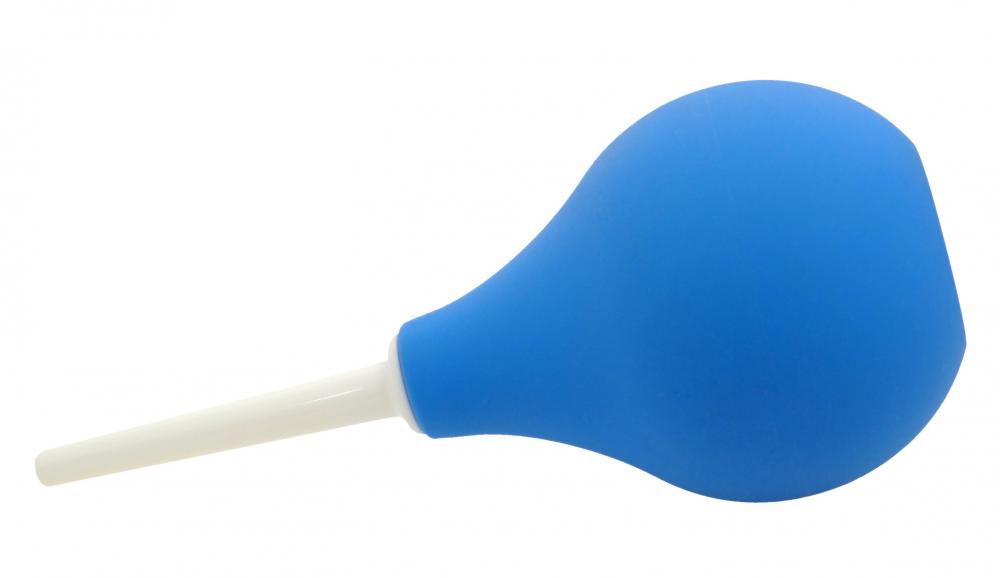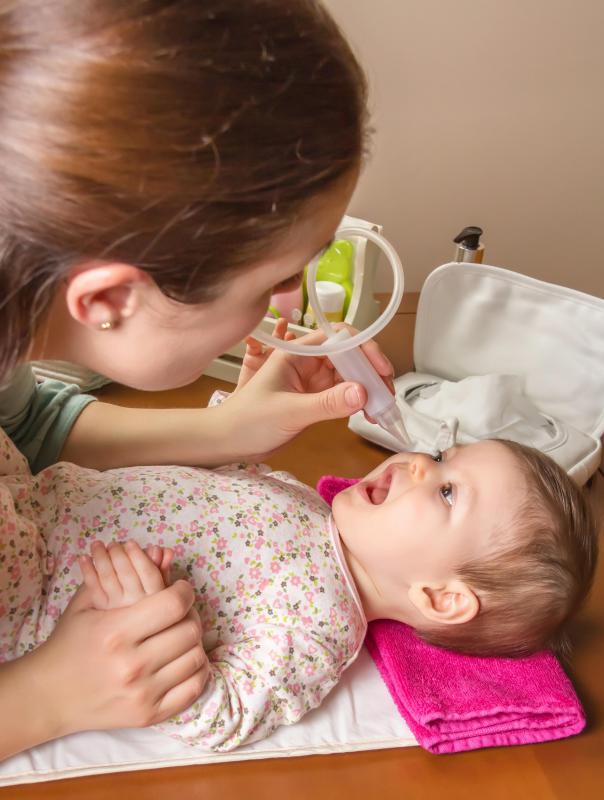At TheHealthBoard, we're committed to delivering accurate, trustworthy information. Our expert-authored content is rigorously fact-checked and sourced from credible authorities. Discover how we uphold the highest standards in providing you with reliable knowledge.
What is Nasal Suction?
When a person is incapable of removing debris from the nasal area, nasal suction devices are frequently used. Nasal suction is generally performed on newborn babies who cannot breathe due to nasal congestion. However, this type of mucus removal can also be performed on people who are sick, elderly, injured, or handicapped.
Newborns often become congested due to a number of factors. When this type of congestion occurs, a child might not be able to breathe. Thus, parents often use a bulb syringe in order to remove any mucus that may be blocking a baby's nasal passages. Bulb syringes are small nasal suction devices that allow a parent to literally suck mucus out of a child's nose.

To use an infant bulb syringe, squeeze the ball end of the syringe before placing it inside of your baby's nose. Once the syringe has been inserted, release the ball in order to allow the syringe to collect mucus. Then, gently remove the syringe, wipe the end of the device, and repeat this action inside of your child's other nostril. While this method is effective at removing mucus, a syringe should not be used more than twice per day.

Within a medical setting, nasal suction tubes may be used to remove mucus or other debris from an adult's nostrils. These tubes perform an action similar to that of a bulb syringe, only most tubes are automated. Medical staff may choose to use a nasal suction tube on a patient that cannot breathe due to an illness or accident. Unlike a child's bulb syringe, nasal tubes tend to create a large amount of discomfort.

A nasal suction apparatus can be found by contacting a medical supply store, searching the Internet, or speaking with a licensed medical doctor. Medical-grade suction devices should not be used within any kind of residential setting. Since these medical tools are more complex than regular suction devices, a medical supervisor should be present while a medical-grade apparatus is being used.

People who are suffering from severe nasal congestion, or parents that cannot remove debris from a child's nose, should seek medical attention right away. When the nasal passages become blocked, breathing is greatly reduced, which is very risky. When purchasing any kind of nasal device, make sure to read manufacturer instructions carefully. While most of these tools are safe to use, incorrect usage could put a person's life in danger.
AS FEATURED ON:
AS FEATURED ON:


















Discussion Comments
@rugbygirl - It really stinks that you didn't get to see your baby right away--I'm sorry! While obviously everyone just wants a healthy baby, it's too bad when birth doesn't go like the mom hoped.
My baby had a lot of trouble with congestion at first, but I never could get the hang of the the nasal suction bulb. It worked for the nurses, it worked for my husband, but every time I followed the exact same steps, nothing happened and I felt so bad for messing with baby's nose for no result. I usually just wound up using a tissue!
Another reason for nasal suction for newborn babies is if meconium was passed during labor. That was the case with my little one. I was upset when I saw the mec because it meant that my baby had to be whisked across the room and suctioned before I could even hold her! The idea is to get the mec out before the baby can breath it into their lungs.
What I hated about it was that it seemed to make her nasal passages all swollen. Poor little thing breathed so loudly for the first couple of weeks! But it was for the best. I have a friend who's a nurse and she says that it's really serious when they breathe in that mec.
Post your comments